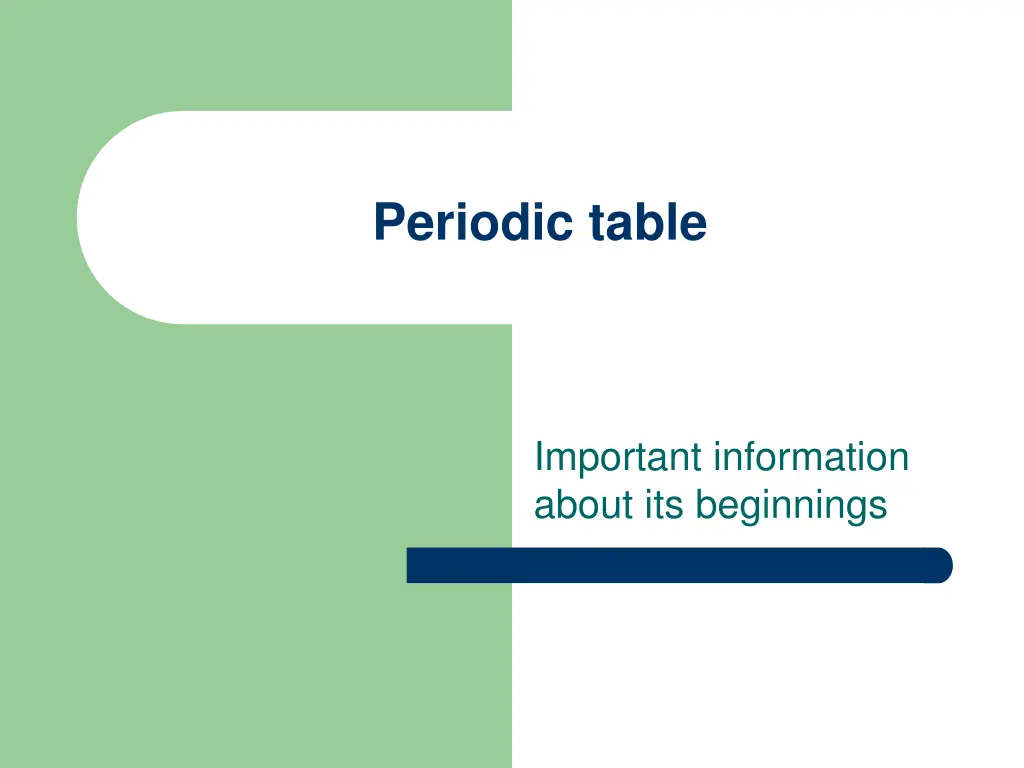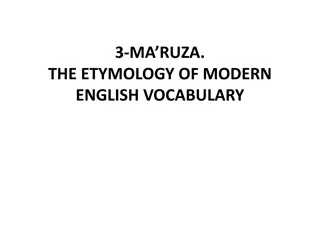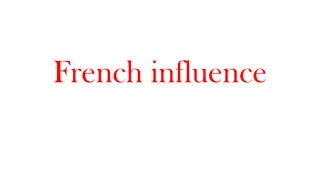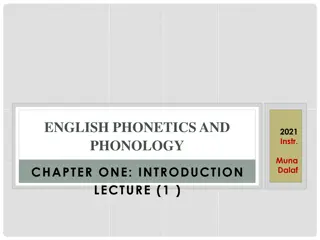
Fascinating Insights into the Periodic Table's Origins and Organization
Discover the historical significance of the Periodic Table, beginning with Dmitri Mendeleev's pioneering work in 1869. Learn how this essential tool categorizes elements by atomic number and weight, with insights on the table's structure, elements' representations, and organization into periods and families. Explore the wealth of information each element entry provides, from atomic number to symbol and atomic mass. Uncover the story behind Mendeleev's strategic empty spaces for undiscovered elements and gain a deeper understanding of this fundamental tool in chemistry.
Download Presentation

Please find below an Image/Link to download the presentation.
The content on the website is provided AS IS for your information and personal use only. It may not be sold, licensed, or shared on other websites without obtaining consent from the author. If you encounter any issues during the download, it is possible that the publisher has removed the file from their server.
You are allowed to download the files provided on this website for personal or commercial use, subject to the condition that they are used lawfully. All files are the property of their respective owners.
The content on the website is provided AS IS for your information and personal use only. It may not be sold, licensed, or shared on other websites without obtaining consent from the author.
E N D
Presentation Transcript
Periodic table Important information about its beginnings
What is the Periodic Table? The periodic table is the most important reference in Chemistry. It is organized with all known elements. The elements are organized from left to right and top to bottom in ascending order of their atomic number.
Who organized the elements? Russian chemist Dmitri Mendeleev, in 1869, proposed a table to organize the known elements. He organized the first table using the atomic weight of the elements. It is now organized by its atomic number. This was his table from 1869.
Who organized the elements? Dmitri left some spaces on the table because he though that there where other elements that have not yet being discovered at that moment. This is Mendeleev
What can we find on the table? On the periodic table there is individual information on each element.. It shows the atomic number of the element which is the number of protons that the elements have. The symbol this is one or two letters that represent that element. If there are two letters the second will always be lower case. Atomic mass is the mass of the element Some will have more information some less but all of them will have at least the symbol.
What can we find on the table? 10 Ne 20.18 Atomic Number Symbol Atomic Mass
How is organized? The horizontal lines of the table are called PERIODS. The vertical lines are called FAMILIES.
This powerpoint was kindly donated to www.worldofteaching.com http://www.worldofteaching.com Is home to well over a thousand powerpoints submitted by teachers. This a free site. Please visit and I hope it will help in your teaching






















